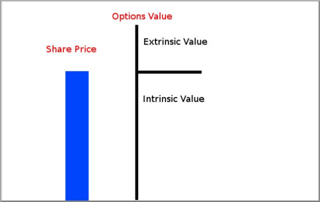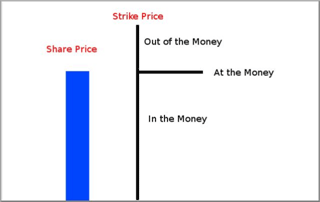Likely you have seen such ads as these:
- "I made $1,023,174.93 in 26 with stock options. Here’s how…"
- "How we turned $5,000 into $800,000 in 1 year!"
- "How to make 12% monthly gains selling options, only 15 minutes daily."
If you are dubious of such claims, I would like to validate your feelings. These people want your hard-earned money and little else.
But maybe you have heard some true stories of people that make some money on these highly leveraged tools. Perhaps you have tried to read some literature on how stock options work and found it to be as comprehensible as a parts manual on a John Deere tractor. If you are wondering about what options really are, and how they can provide leverage and limit risk… then read on. If you looking for a Category II quick coupler, you had better look elsewhere.
The Stock Market is Real Estate
The stock market is highly conceptual and the intangibleness of it is often difficult to grasp. However, buying a stock is no different than buying a house as an investment. A stocks value will generally exceed its book value, or the worth of all assets minus liabilities. A newer house is usually worth more than the sum of all the nails and boards that hold it together. The stock market has bull and bear markets; real estate has sellers and buyers markets. Stocks are valuated against their peers in an industry group or sector, real estate derives much of its value based on the surrounding community. I could go on, but I think you get the point.
To explain options, I will use the analogy of real estate so that we can clearly see its purpose and application.
Technical Options Definition
Before we get into the example of what options really are, I need to list the technical definition of options that will no doubt boggle.
An option is a contract between two parties giving the taker (buyer) the right, but not the obligation, to buy or sell a security at a predetermined price on or before a predetermined date. To acquire this right the taker pays a premium to the writer (seller) of the contract. Source: Understanding Options Trading
Come again? If that made perfect sense and you feel comfortable trading options, then by all means skip this next section. If you are all still here, let’s get on with what options really are.
Buying Real Estate Options
Imagine that in your hometown you hear rumors flying around that some very large businesses are eyeing out your community to establish their chains. You realize that this kind of business would make real estate shoot through the roof. You remember that down your street there is a cute little house for sale. You approach the owner to work out a deal. He is asking $100,000 for the home but you simply do not have that kind of money available. As well, since this is somewhat speculative, you do not wish to invest that large of a sum.
With a little ingenuity you think up a plan.
"What if", you ask the homeowner, "you were to promise me the home at today’s market value of $100,000. We will draft up an agreement and I will have the right at any time over the next 12 months to purchase your home for that amount. At the end of 12 months if I do not purchase your home, the contract is null and void. How much would that sort of agreement cost me?"
The homeowner mulls it over for a minute or two.
"Well," he says, "I too have heard the rumors of businesses moving in but I don’t believe them. I’ve been trying to sell my home for two years now without success. I’d be happy to temporarily take my home off the market and make that agreement with you for $5,000. Either way," he smiles, "I make $5,000 plus the $100,000 on the sale of the home, or I just keep your $5,000 as a fee for taking my home off the market for one year."
You draft up an agreement and the deal is done. Should the market rise and the home be worth $120,000, you are the middle man and get to keep the extra $20,000. Of course you would need to minus the $5,000 you spent on the contact with the homeowner. Still, you would have tripled your investment. This is the power of options.
Stock Market Call Options
 The above example highlights how an option works. It gives you the right to buy a home or stock, but you are not obligated to do so. The contract is worth a certain amount of money which we will call extrinsic value. This is value of the contract and it is independent of what you need to pay to acquire the home.
The above example highlights how an option works. It gives you the right to buy a home or stock, but you are not obligated to do so. The contract is worth a certain amount of money which we will call extrinsic value. This is value of the contract and it is independent of what you need to pay to acquire the home.
Next, you must agree upon a purchase price of the home. If the agreed upon purchase price of the home is less than market value – if you agreed that you would only pay him $80,000 for the home when the market price is $100,000 – then you would need to pay the difference of $20,000 upfront. The $20,000 represents intrinsic value, or money that is being paid down on the value of the home. Your total contract value is up to $25,000. If your options agreement stipulates that you can buy the asset for less than current market value, the option is said to be ‘in the money’ or contains intrinsic value.
 If you really believe that the market is going to be hot, you could stipulate a purchase price of $120,000 – or an amount above current market value. The homeowner will no doubt give you such a contract for much, much less than $5,000 – perhaps for $1,000 since this is unlikely to take place. As you get quite a ways away from the market price we then term the options contract as being ‘out of the money’. You gain more leverage is the home went up to $130,000, but the risk is high that you will never see the $1,000 you invested again.
If you really believe that the market is going to be hot, you could stipulate a purchase price of $120,000 – or an amount above current market value. The homeowner will no doubt give you such a contract for much, much less than $5,000 – perhaps for $1,000 since this is unlikely to take place. As you get quite a ways away from the market price we then term the options contract as being ‘out of the money’. You gain more leverage is the home went up to $130,000, but the risk is high that you will never see the $1,000 you invested again.
If the agreed upon purchase price of the asset is the current market value, we call this an ‘at the money’ options contract. In this example, the purchase price and the market value match at $100,000 so this is ‘at the money’.
Call Options Made Easy
Options are that simple. You get rights to trade, but you are not obligated to do so. You cannot lose more than you paid for the contract. The agreed upon purchase price is called a strike price. The option has a certain amount of time built in before it expires. The two values that can make up an option are intrinsic value (sort of like a down payment on the asset), and extrinsic value (the value attached to the terms in the agreement such as time before expiry).
The above example reflects what a Call option contract is and how you can purchase one when feeling bullish about the market. But what is a Put options contract and how is it useful when you think the markets will turn bearish?